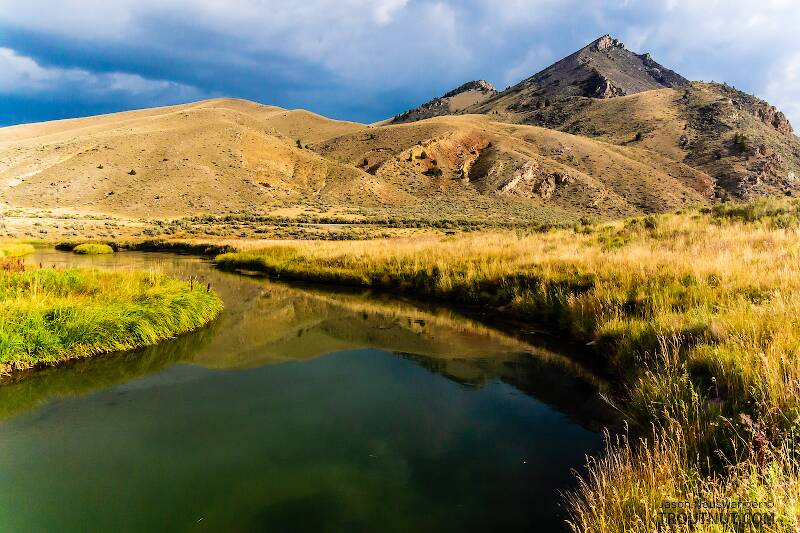
Salmonflies
Pteronarcys californica
The giant Salmonflies of the Western mountains are legendary for their proclivity to elicit consistent dry-fly action and ferocious strikes.
Featured on the forum

This one seems to tentatively key to Holocentropus, although I can't make out the anal spines in Couplet 7 of the Key to Genera of Polycentropodidae Larvae nor the dark bands in Couplet 4 of the Key to Genera of Polycentropodidae Larvae, making me wonder if I went wrong somewhere in keying it out. I don't see where that could have happened, though. It might also be that it's a very immature larva and doesn't possess all the identifying characteristics in the key yet. If Holocentropus is correct, then Holocentropus flavus and Holocentropus interruptus are the two likely possibilities based on range, but I was not able to find a description of their larvae.

Troutnut is a project started in 2003 by salmonid ecologist Jason "Troutnut" Neuswanger to help anglers and
fly tyers unabashedly embrace the entomological side of the sport. Learn more about Troutnut or
support the project for an enhanced experience here.
Female Dicosmoecus atripes (October Caddis) Caddisfly Adult Pictures
This specimen is 26 mm.
- Entoman
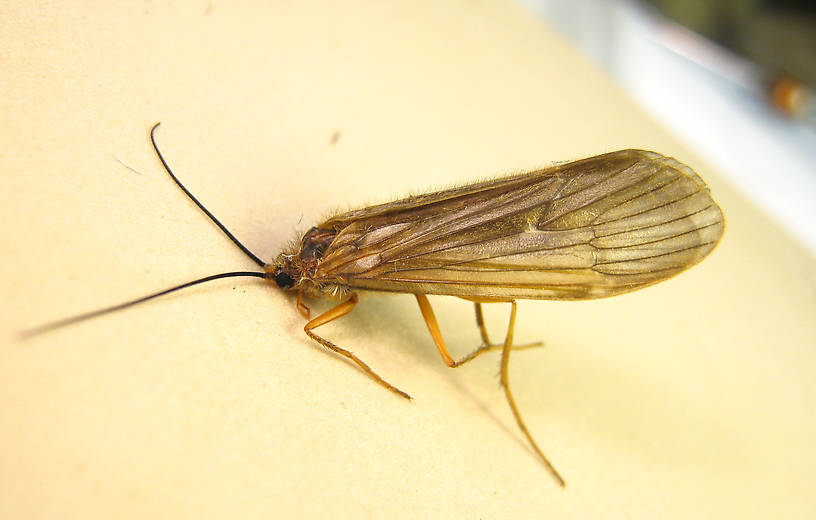
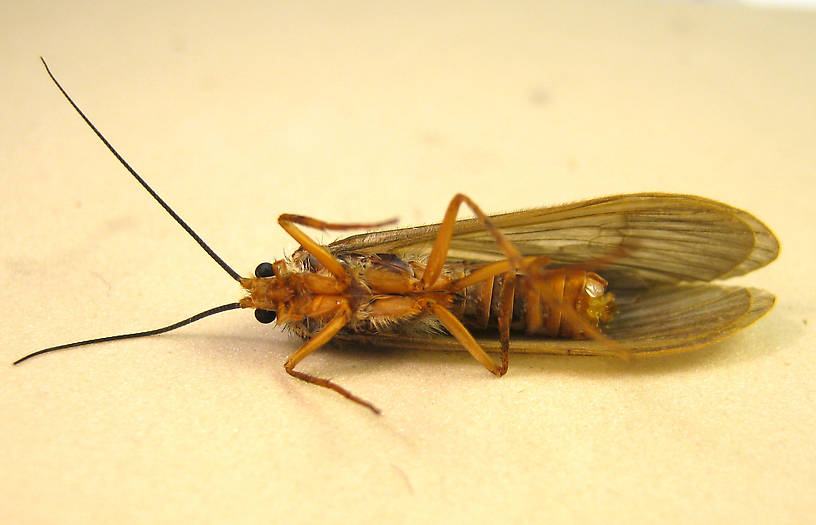
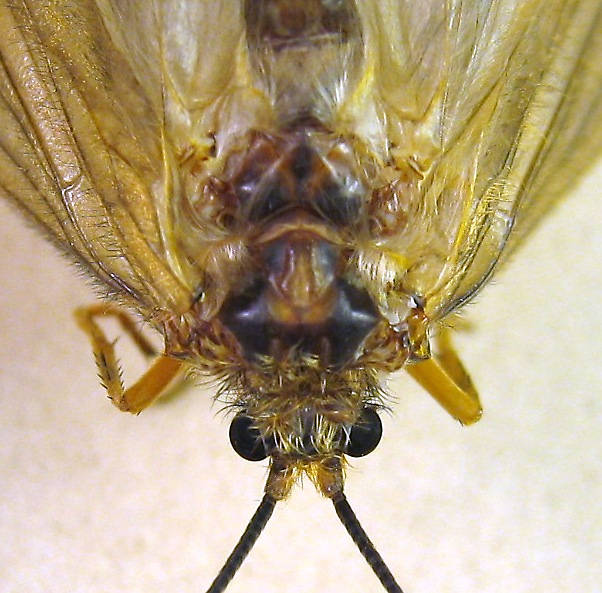
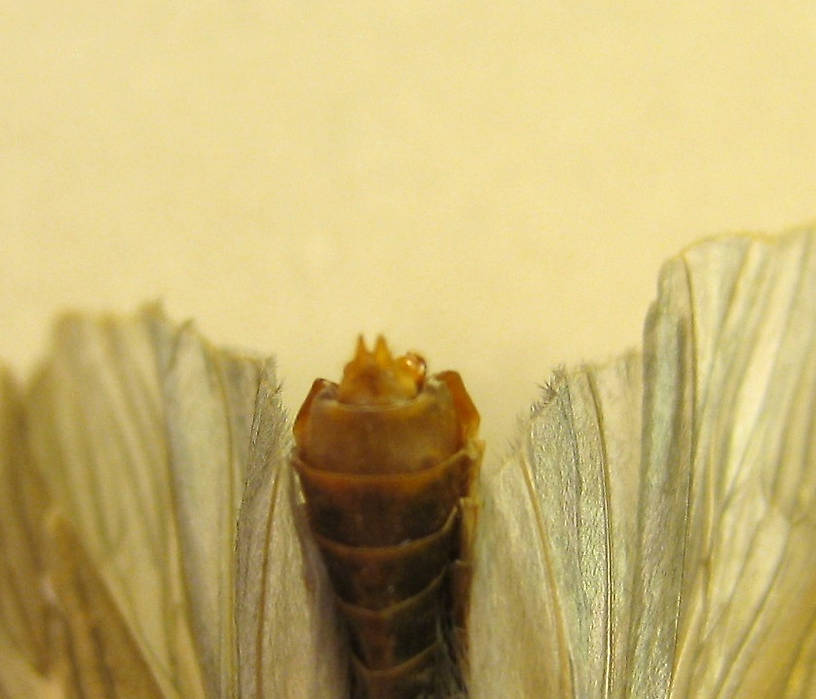
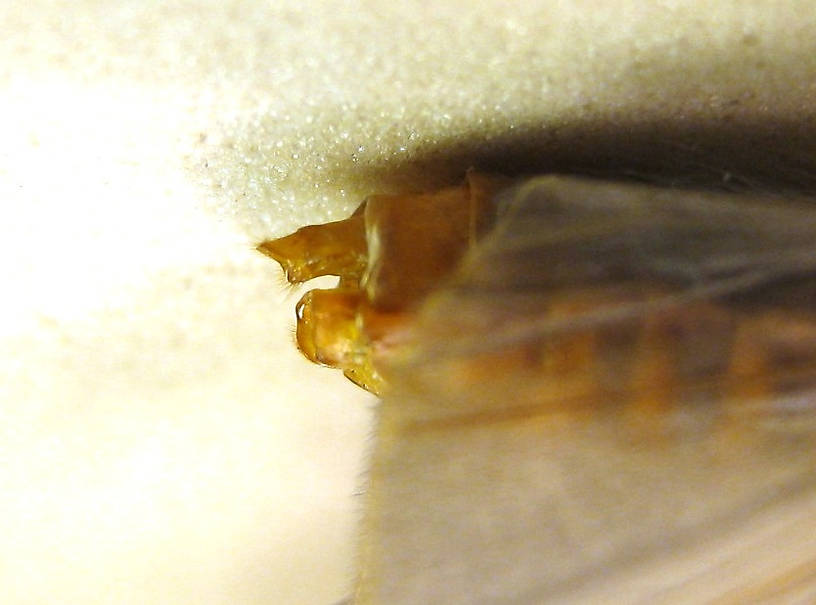
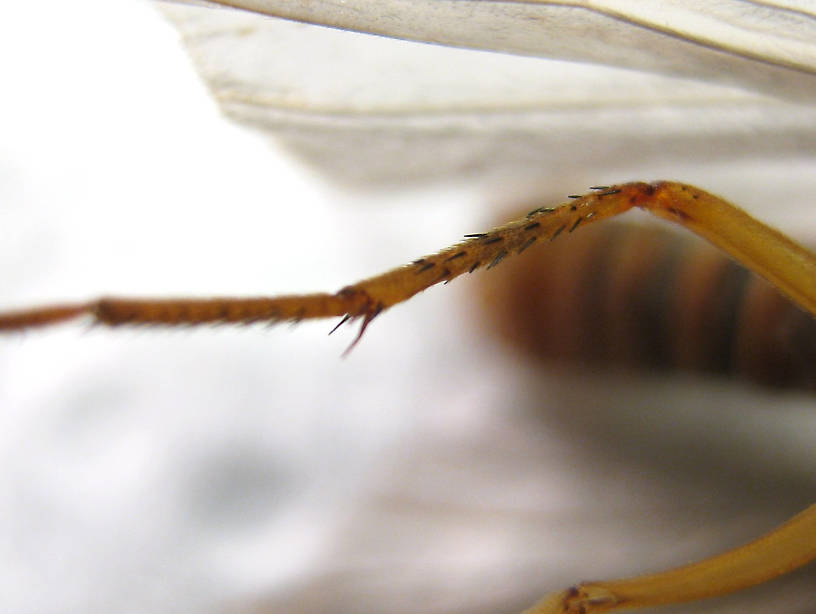
This caddisfly was collected from the St. Joe River in Idaho on September 27th, 2013 and added to Troutnut.com by Entoman on September 29th, 2013.
Discussions of this Adult
Gilvipes or atripes?
7 replies
Posted by Entoman on Sep 29, 2013
Last reply on Dec 19, 2016 by Clark2016
These two species are very difficult to tell apart. Because of the fuscated wing veining and black antennae, I'm leaning towards gilvipes, but it is my understanding that these characters are not very dependable. Regardless, both are the October caddis of western lore and can provide awesome dry fly fishing if the angler is lucky enough to hit it right.
There is some debate over which flies work better, dries or nymphs. I come down on the side of dry flies. I have rarely found the pupa effective, and even when they are it's often a darker color than the conventional orange that works best. For years I struggled with this until learning that the pupa (more properly called pharates) usually crawl out on shore to ecclode in the darkness of night. Since they also start from their rock cabins in very shallow water to begin with - not much nymphing opportunity there... It is highly doubtful that trout have the opportunity to feed much on the pharates, let alone enough to become selective. It is my opinion that when the pupal imitations work well, it is because they are either taken for drowned adults or perhaps it's just an attractor response to what looks like a big chunk of protein. Big fish often lose their caution this time of year as fishing pressure abates and storing calories for the Winter becomes a prerequisite.
There is some debate over which flies work better, dries or nymphs. I come down on the side of dry flies. I have rarely found the pupa effective, and even when they are it's often a darker color than the conventional orange that works best. For years I struggled with this until learning that the pupa (more properly called pharates) usually crawl out on shore to ecclode in the darkness of night. Since they also start from their rock cabins in very shallow water to begin with - not much nymphing opportunity there... It is highly doubtful that trout have the opportunity to feed much on the pharates, let alone enough to become selective. It is my opinion that when the pupal imitations work well, it is because they are either taken for drowned adults or perhaps it's just an attractor response to what looks like a big chunk of protein. Big fish often lose their caution this time of year as fishing pressure abates and storing calories for the Winter becomes a prerequisite.
Start a Discussion of Adult
Female Dicosmoecus atripes (October Caddis) Caddisfly Adult Pictures
Collection details
Location: St. Joe River, Idaho
Date: September 27th, 2013
Added to site: September 29th, 2013
Author: Entoman
Date: September 27th, 2013
Added to site: September 29th, 2013
Author: Entoman

